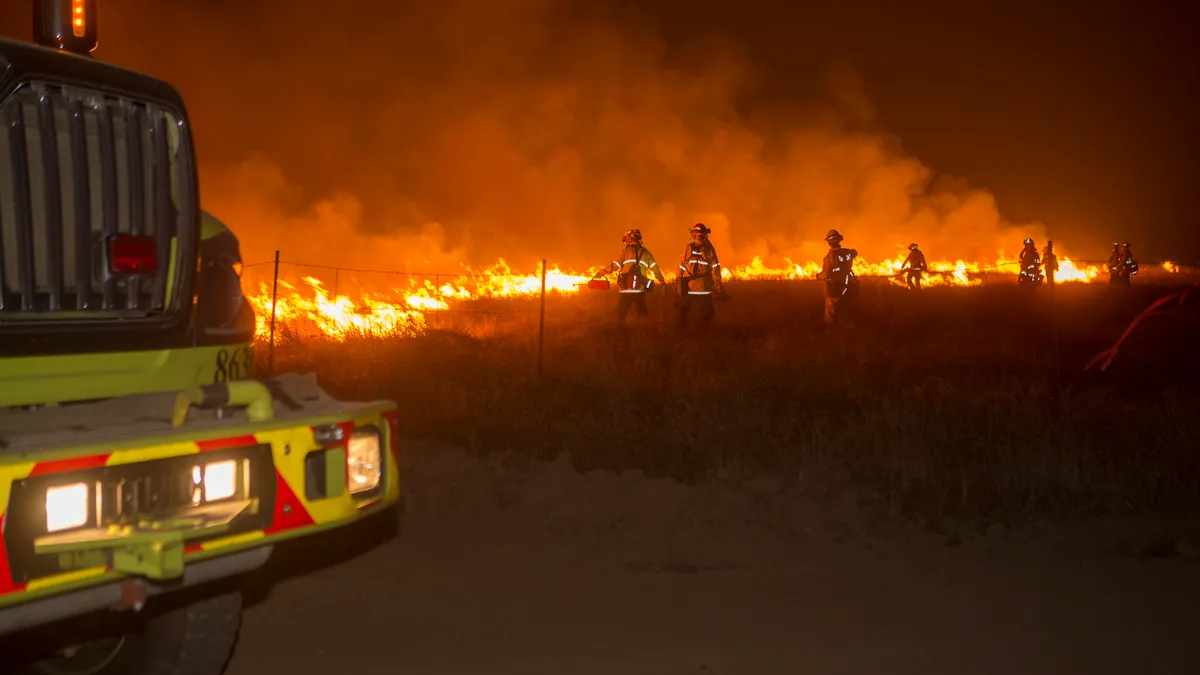Dive Brief:
- Southern California Edison (SCE) has informed federal regulators that its equipment may have sparked a blaze last year that led to two deaths, and which may have ultimately created conditions for a subsequent mudslide that killed 21 people.
- In a Form 10-Q the utility informed the U.S. Securities and Exchange Commission (SEC) that witnesses reported a fire ignited in the vicinity of its power pole. The utility "believes that its equipment was associated with this ignition," which is one of at least two possible blazes that led to the deadly Thomas fire.
- SCE is being sued over the blaze, which some plaintiffs say set the stage for the Montecito mudslides. The utility informed the SEC that it expects to incur losses as a result, but cannot yet say how much.
Dive Insight:
SCE's revelation comes just days after the California Public Utilities Commission (CPUC) opened a proceeding to review utility fire mitigation measures.
The SCE news is "a very significant development and one that will be admissible in court to prove Edison’s liability in causing the Thomas fire," attorney Joseph Liebman, who represents victims of the fire, told the Los Angeles Times.
California has been struggling with wildfires, but also how to deal with the aftermath. Last year's fire season pushed Pacific Gas & Electric to start talking about bankruptcy, which in turn led to legislation addressing utility fire preparedness.
The CPUC is working quickly to review fire mitigation plans, due to the demands of Senate Bill 901 and the approaching 2019 fire season. Mitigation plans were previously required but the new legislation added more rigor. Originally the legislation would have changed California's interpretation of "inverse condemnation" laws, which put utilities on the hook for all fire damages — whether or not they were negligent. Those provisions were not included in the final version, however.
According to SCE, there were at least two separate points where the Thomas Fire started: one in the Anlauf Canyon area of Ventura County and another near Koenigstein Road in the city of Santa Paula. The utility believes its equipment was involved in the ignition along Koenigstein Road.
SCE is "continuing to analyze the progression of the fire" from the Koenigstein ignition point and "the extent of damages that may be attributable to that ignition," according to a company statement. The utility is also conducting its own review regarding the Montecito mudslides and factors including the source of ignition of the portion of the fire "that burned through the Montecito area," based on the SEC filing.
The utility said it has not determined whether the Anlauf Canyon area ignition involved SCE equipment. The California Department of Forestry and Fire Protection removed SCE equipment from both sites, and the utility said it has not been able to examine it yet to make a determination.
SCE said it is reviewing the "facts and circumstances" of the Thomas fire, including possible ignition points, the fire progression from each ignition point and the "attribution of damages" to fires with separate ignition points.














